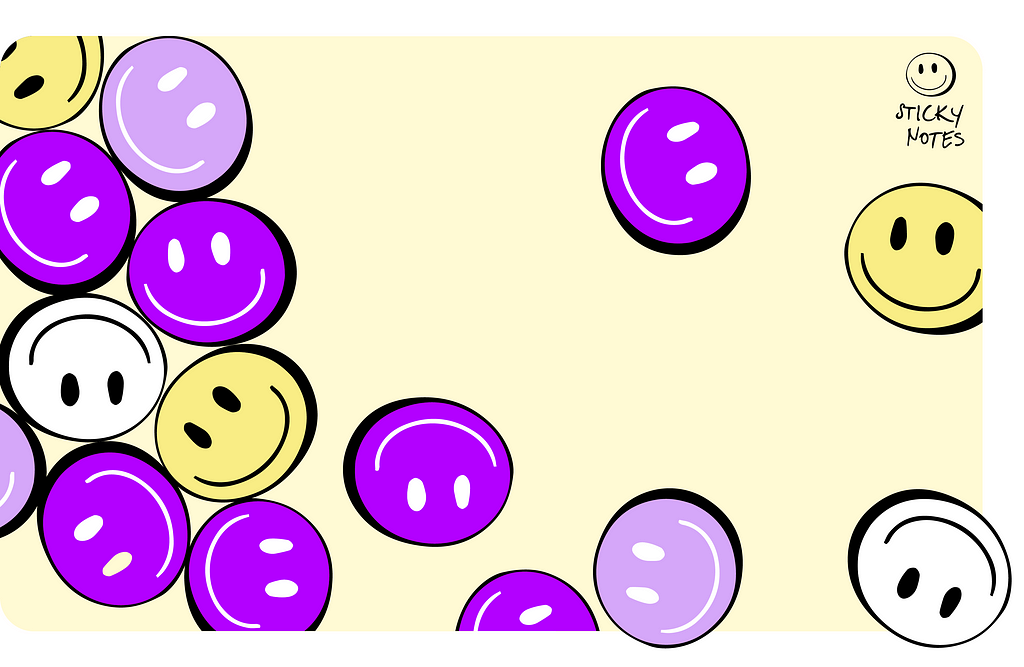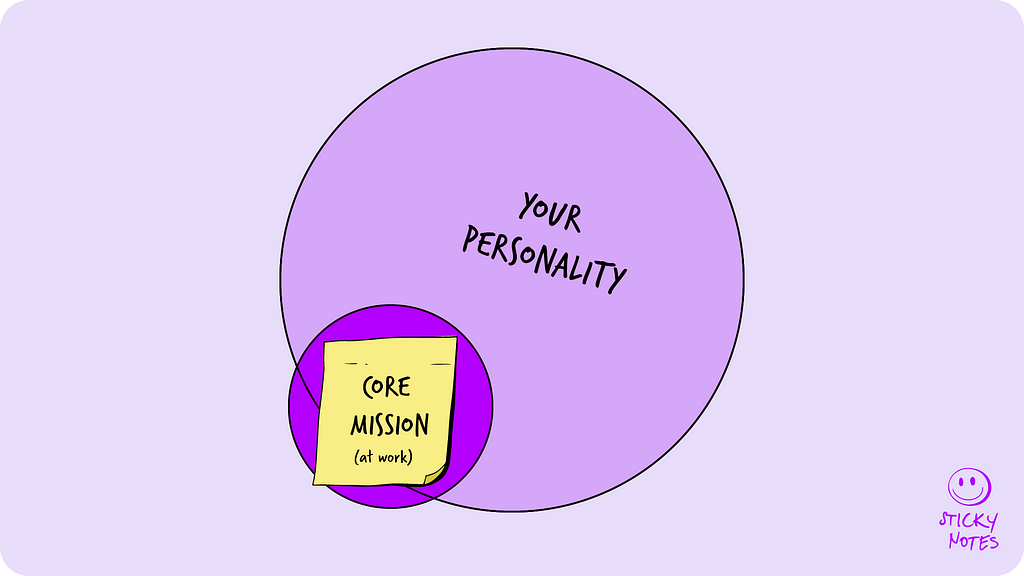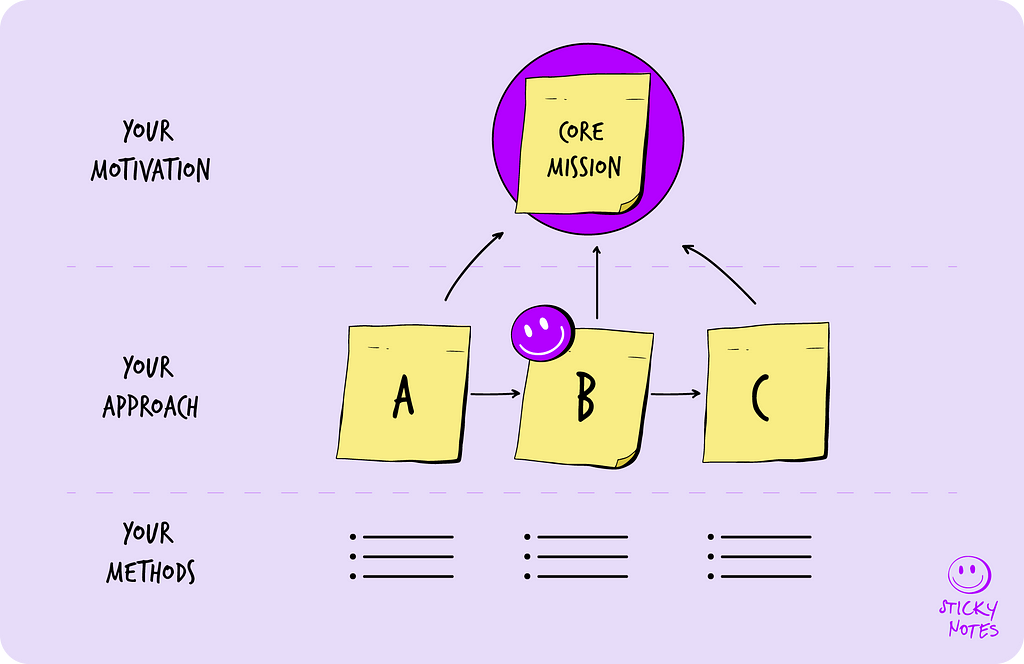How to find your designer self — And understand how YOU approach design

We all know the feeling. The identity crisis that comes with being a designer is not easy to overcome. Somehow we are solving problems for others all the time, but when it comes to ourselves it feels impossible.
The good news is you already have a designer self. It is hiding in plain sight. Rooted in the way you work and think about problems. So, let’s do some soul-searching to discover and define your designer self.
I would recommend this for intermediate designers and up, since it is based on a good understanding of ones own work process. But if you are a junior, and you want to try this out — more power to you!
Discover your designer self

Core mission — your why
Your core mission (at work) is part of your personality. It is what you care about and what type of person you are. Get some sticky notes — you know the drill, one idea per note.
Personality tests like 16personalities are great if you are not sure where to start (where are my fellow INFJ-A?!). Do take the outcomes with a grain of salt, just note down what resonates with you. Ask your friends, your manager, your colleagues about what they think drives you.
Try and think zoomed out, not on a detail view. If you care about beautiful UI — is it to get more people to use it? To leave them in awe? To make them happy?
Ask yourself
- What do I care about?
- What do I want the end goal to be?
- Why am I drawn to certain things?
- What drives me as a designer?
- Why am I doing certain actions, what outcome am I looking for?
Your hard skill areas — your what and how

Next step, backtrack from your core mission. What do you do in order to achieve your core mission? You can write down anything from skills, thought patterns, tools or methods. Play detective and keep at it with the sticky notes!
Ideas on how to get your mind going:
- Find models and methods you like to use, analyze and try to understand why you prefer some over others.
- Look at adjacent design areas or disciplines, f.e. strategy and development or the bigger picture like sustainability. Are you branching out into any of them?
- Include things you are trying to integrate more and learn
To make sense of the large amount of thoughts, cluster sticky notes together. Find the themes of groups to create your hard skill areas. It can help to use an adjective and a noun, f.e.: Rapid Prototyping or User-focused Design.
Define your designer self
This is where it all comes together.
Define your core mission, it can help to start the sentence with I want… to focus your mind. For example: I want my designs to improve people lives through building trust and forming new habits.

Then define your hard skill areas with this template. The outcome ties into your core mission or is an integral part to you to achieve the mission. For example: I use system thinking methods to understand the users’ context and product space, which allows me to design scalable, future-thinking products.
You can also define your methods if you want to add them here. How do you do what you do? These can be high-level or detailed — whatever you want. For example: Problems and opportunity mapping

Lastly, connect it all! Draw arrows on how your areas connect to each other and your core mission. Chronologically? Iteratively? – You are the boss here! This diagram plus your personality and soft skills is your designer self.
At last, you have found your designer self.
Remember you evolve, you find new interests and this is not set in stone. Your core mission will stay with you, and your approach and methods will be refined and polished over time.
Every designer is unique in their way and cares about something special, but we all fit under the umbrella term of designer. We just need to take the time to reflect and dissect the why and find underlying motivations. It is powerful for ourselves to understand our value, core strengths and approach as a designer. It will boost your confidence, help you build a better designer brand & portfolio and find better opportunities for your(designer)self.
Thank you for sticking around. ツ
Further reading that I thought was very interesting:
UX-Designers Identity Crisis by Kaja Laura Toczyska
They’re not soft skills — they’re really hard skills by Rachel McConnell
The vanishing designer by Chuánqí Sun
How to find your designer self — and understand how YOU approach design was originally published in UX Collective on Medium, where people are continuing the conversation by highlighting and responding to this story.